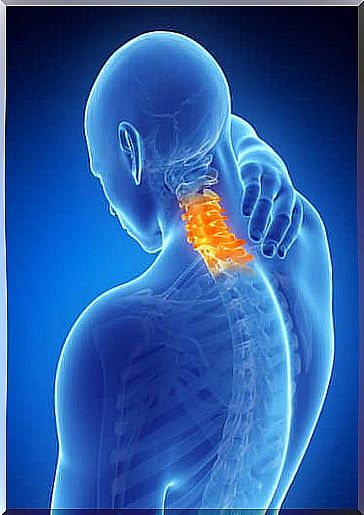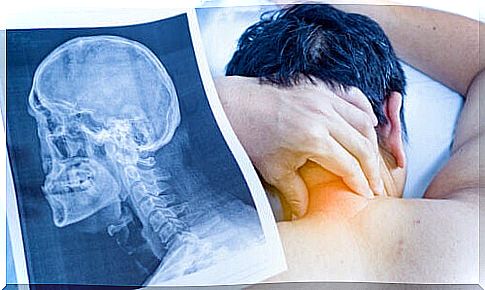Neck Pain: Causes And Symptoms
Neck pain is usually accompanied by other symptoms such as tingling in the fingers or weakness in the arms. Find out more!

Neck pain is a medical term that refers to neck pain. The cervical region is the one in the back part of the neck, which extends from the skull to the thoracic vertebrae.
This is a very common situation that affects around 70% of people at some point in their life. Indeed, it is estimated that 14% of sick leave occurs because of neck pain.
In reality, neck pain is not just a simple neck pain as it often spreads to the head or arms. On the other hand, it tends to restrict movement in many parts of the body.
Neck pain can be caused by many causes. Usually it is not serious, but the effects on the person’s life are significant. We give you more details in this article.
What is neck pain?
The cervical column is a part of the spine that extends from the base of the skull to the chest area. It consists of 7 vertebrae and is one of the most flexible parts of the spine. Neck pain refers to pain in this area.
However, it can be a painful sensation that spreads to the arms, head or back. Sometimes it is accompanied by other symptoms, such as tingling in the fingers, or dizziness and nausea.
This neck pain is the result of many causes. It can be due to changes in muscles or ligaments, damage to the vertebrae or joints, or even nervous pathologies. Likewise, neck pain is often due to poor posture. For the body position to be correct, our head must be positioned correctly on the neck.
However, many people have their heads too far forward, which puts too much strain on the back muscles of the neck. This position also tends to compress other cervical structures, causing neck pain.

What are the causes of neck pain?
It is certain that most cases are the result of overloading the muscles of the neck. Nevertheless, we can summarize the causes of neck pain as follows.
Muscle causes of neck pain
These are the most common and they affect the muscles of the posterior neck. They include overloading these muscles, contractures, straining, etc.
Trauma affecting the back of the neck usually occurs in the muscles. The most common trauma is whiplash. It is the injury that occurs when the neck stretches and flexes sharply or excessively.
Nerve damage
Neck pain can also be due to nerve damage which, in turn, is the consequence of many other reasons. They mainly occur because of a herniated disc. This is a situation in which the disc that is between the vertebrae has shifted from its usual place. It then puts pressure on the nerves and generates pain and other neurological symptoms.
In addition, neck pain can be a reported pain. This means that it is actually pain coming from another part of the body. For example, a lesion in the shoulder or even in the esophagus can produce this symptom.
Other diseases of the cervical spine
As we have already mentioned, there are many diseases that can cause neck pain. Regarding those that directly affect the cervical spine , the main ones are cervical stenosis as well as osteoarthritis:
- Cervical stenosis is a condition that causes narrowing of the duct in the spine. This narrowing can eventually damage the spinal cord. It is generally the consequence of aging since it affects both the intervertebral discs as well as the vertebrae and ligaments. This disease also causes loss of strength and tenderness in the hands, among other symptoms.
- Osteoarthritis is a very common articular pathology which corresponds to wear and tear of the articular cartilage. Neck pain from this disease is usually more severe in the morning and improves during the day.
Conclusion…
Neck pain is the term used to refer to pain in the cervical area. Although its causes are numerous and often not serious, it is important to consult a doctor to make a diagnosis and choose the right treatment.









